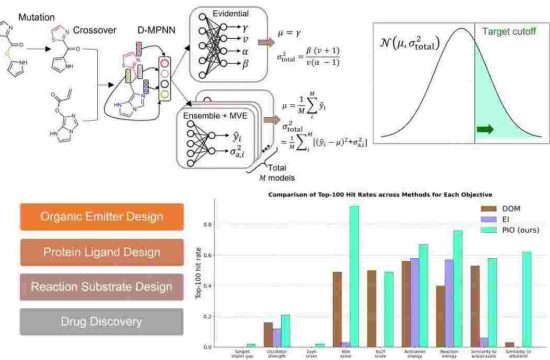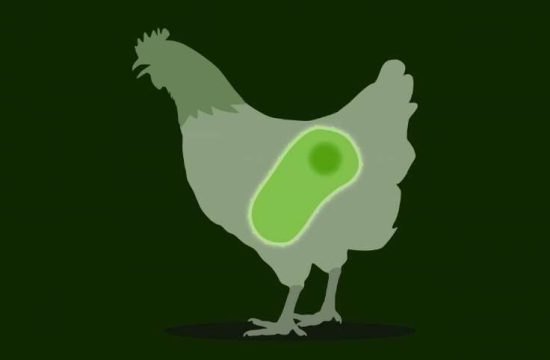
CAMBRIDGE, Mass. — MIT chemists have developed a new way to synthesize complex molecules that were originally isolated from plants and could hold potential as antibiotics, analgesics, or cancer drugs.
These compounds, known as oligocyclotryptamines, consist of multiple tricyclic substructures called cyclotryptamine, fused together by carbon–carbon bonds. Only small quantities of these compounds are naturally available, and synthesizing them in the lab has proven difficult.
The MIT team came up with a way to add tryptamine-derived components to a molecule one at a time, in a way that allows the researchers to precisely assemble the rings and control the 3D orientation of each component as well as the final product.
“For many of these compounds, there hasn’t been enough material to do a thorough review of their potential. I’m hopeful that having access to these compounds in a reliable way will enable us to do further studies,” says Mohammad Movassaghi, an MIT professor of chemistry and the senior author of the new study.
In addition to allowing scientists to synthesize oligocyclotryptamines found in plants, this approach could also be used to generate new variants that may have even better medicinal properties, or molecular probes that can help to reveal their mechanism of action.
Tony Scott PhD ’23 is the lead author of the paper, which appears in the Journal of the American Chemical Society.
Fusing rings
Oligocyclotryptamines belong to a class of molecules called alkaloids — nitrogen-containing organic compounds produced mainly by plants. At least eight different oligocyclotryptamines have been isolated from a genus of flowering plants known as Psychotria, most of which are found in tropical forests.
Since the 1950s, scientists have studied the structure and synthesis of dimeric cyclotryptamines, which have two cyclotryptamine subunits. Over the past 20 years, significant progress has been made characterizing and synthesizing dimers and other smaller members of the family. However, no one has been able to synthesize the largest oligocyclotryptamines, which have six or seven rings fused together.
One of the hurdles in synthesizing these molecules is a step that requires formation of a bond between a carbon atom of one tryptamine-derived subunit to a carbon atom of the next subunit. The oligocyclotryptamines have two types of these linkages, both containing at least one carbon atom that has bonds with four other carbons. That extra bulk makes those carbon atoms less accessible to undergo reactions, and controlling the stereochemistry — the orientation of the atoms around the carbon — at all these junctures poses a significant challenge.
For many years, Movassaghi’s lab has been developing ways to form carbon-carbon bonds between carbon atoms that are already crowded with other atoms. In 2011, they devised a method that involves transforming the two carbon atoms into carbon radicals (carbon atoms with one unpaired electron) and directing their union. To create these radicals, and guide the paired union to be completely selective, the researchers first attach each of the targeted carbon atoms to a nitrogen atom; these two nitrogen atoms bind to each other.
When the researchers shine certain wavelengths of light on the substrate containing the two fragments linked via the two nitrogen atoms, it causes the two atoms of nitrogen to break away as nitrogen gas, leaving behind two very reactive carbon radicals in close proximity that join together almost immediately. This type of bond formation has also allowed the researchers to control the molecules’ stereochemistry.
Movassaghi demonstrated this approach, which he calls diazene-directed assembly, by synthesizing other types of alkaloids, including the communesins. These compounds are found in fungi and consist of two ring-containing molecules, or monomers, joined together. Later, Movassaghi began using this approach to fuse larger numbers of monomers, and he and Scott eventually turned their attention to the largest oligocyclotryptamine alkaloids.
The synthesis that they developed begins with one molecule of cyclotryptamine derivative, to which additional cyclotryptamine fragments with correct relative stereochemistry and position selectivity are added, one at a time. Each of these additions is made possible by the diazene-directed process that Movassaghi’s lab previously developed.
“The reason why we’re excited about this is that this single solution allowed us to go after multiple targets,” Movassaghi says. “That same route provides us a solution to multiple members of the natural product family because by extending the iteration one more cycle, your solution is now applied to a new natural product.”
“A tour de force”
Using this approach, the researchers were able to create molecules with six or seven cyclotryptamine rings, which has never been done before.
Now that the researchers have synthesized these naturally occurring oligocyclotryptamines, they should be able to generate enough of the compounds that their potential therapeutic activity can be more thoroughly investigated.
They should also be able to create novel compounds by switching in slightly different cyclotryptamine subunits, Movassaghi says.
“We will continue to use this very precise way of adding these cyclotryptamine units to assemble them together into complex systems that have not been addressed yet, including derivatives that could potentially have improved properties,” he says.
The research was funded by the U.S. National Institute of General Medical Sciences.








